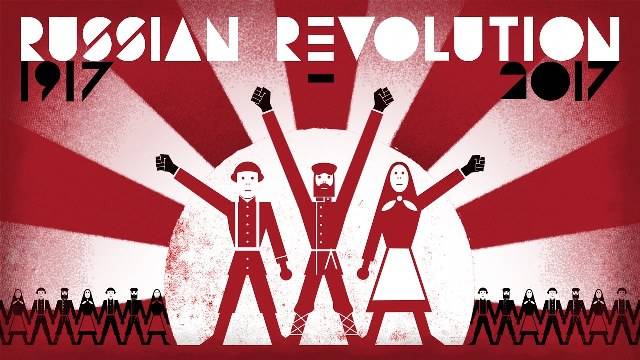A century ago Russian people went through what we are going through today. But the country has come a long way.
The 1917 Russia was marred by two revolutions in the same year against the backdrop of World War I.
The Romanov family, headed by Nicholas II ruled the Czarist Russia for 300 years. The West viewed her as an underdeveloped nation since Russia was still caught in the quagmire of serfdom, illiteracy and poverty.

Serfdom, for the West, was a thing of the Middle Ages. The serfs in Russia were owned by powerful landowners, where they tilled their land and could be exchanged like goods.
The abolishment of serfdom in 1861 gave these serfs a chance to organise and gather together to fight for their living since they previously had no land of their own.
Resentment and bitterness grew for the Czar as the schism between the peasants and the elite grew. Russia was involved in two wars, one in the Black Sea (Crimean War 1854-56) and one in the Pacific (Russo-Japanese War 1905) which affected the peasantry the most. There was no food and the peasants were tired of fighting the war that Russia lost. They suffered heavy casualties in these wars.
The industrial development came to Russia at the turn of the 20th century and she saw a shift of workers from the rural to urban centres. The former peasants who now sought industrial work were living in destitute conditions in the urban centres, fighting for menial jobs and a few scraps of bread.

They started protesting against the monarchy. In 1905 fire was open to a peaceful protest on the Czar’s order. Hundreds of unarmed protesters were killed. This sparked a series of protests in the same year which culminated in the Czar forming a Duma (parliament) to make amends and control the situation. But the monarch would dissolve the Duma at will.
The events further plummeted until World War I.

Three years of toil and fatigue into the war the Russians incurred heavy losses and did not want to fight. They were no match for the industrialized German forces. Agriculture was destroyed, the wheat growing area in Ukraine was taken up by the enemy – and as a result of these events mutiny broke out within the Russian army.
The Czar himself left Petrograd (the then Russian capital) and headed the army in 1915. Meanwhile, Rasputin a self-proclaimed religious scholar and healer started interfering in the politics by influencing the Czarina, to a great dismay of not only the upper class but the church and the peasantry.
In February 1917 the protests and strikes took a serious tone as famine, inflation and unemployment scarred the country. The demonstrations now comprised of students and workers from all classes.
The Czar’s forces refused to put a stop to these demonstrations. His reliable Cossack regiment also broke out into mutiny. The situation got out of hand for Nicholas II. The strikes were mainly organized by the Bolsheviks, Mensheviks and various workers’ committees called the Soviets.
In February 1917, the Duma refused to accept Czar’s commands of not suspending the sessions. It formed a provincial government and Nicholas II abdicated the throne.
Alexender Kerensky headed the new Provincial government, which had incorporated a liberal agenda: giving freedom of speech, rights of the workers to form unions and equality. But he opposed a violent social revolution.
This was the bourgeois revolution in the sense that the bourgeois, proletariats and peasantry opposed the monarchy. The provincial government founded a new parliament on the western lines and gave rights to the public. Kerensky himself was from the bourgeois strata.
Having a military mindset, Kerensky still supported Russian participation in the World War. This further enraged the masses and worsened famine. He also underestimated the Bolsheviks who were united under Lenin.

Lenin supported the peasants and promised them land and ardently discouraged Russian participation in the war which earned him a great number of followers. He also promised to end feudalism and earned the support of the Mensheviks and social revolutionaries.
Concentrating on making amendments at home, and withdrawing participation from war, gave people hope.
Consequently, in November 1917, the Bolsheviks earned the support of multitudes in Petrograd and in Moscow.Thus, the bourgeois revolution was turned into a proletariat revolution.

Lenin launched a coup against the provincial government.He formed councils and groups of workers, peasants and soldiers who would participate in ruling the new state of the Soviets.
Even after a century we see similarities between the then Russian population and the problems faced by the masses in the developing countries like Pakistan.
The Soviets ruled for decades. Russia saw a huge shift from monarchy to socialist rule and finally the capitalist rule within the last 100 years. It was broken down, lost several states, nonetheless it developed and the condition of the people has become better from 1917.
The condition of 1917 Russia is pretty similar to that of 2017 Pakistan. We are 100 years behind most of the countries.
Toppling population, illiteracy, unemployment, load shedding in the urban centres, feudalism in the rural areas and leaders who work for their own ends, sounds like the Czarist Russia. To make matters worse we also have to deal with industrialized problems like lack of clean water and smog.Moreover, people are tired of fighting the endless battle with the terrorists. Relentless intolerance among the many sects and minorities has made the matters worse!
A democracy it may be with hints of fascism and totalitarianism. What will be the fate of Pakistan after a 100 years? Will she still be engulfed in the smog of “czarist” type leaders and illiteracy? Or will she rise from the ashes?






